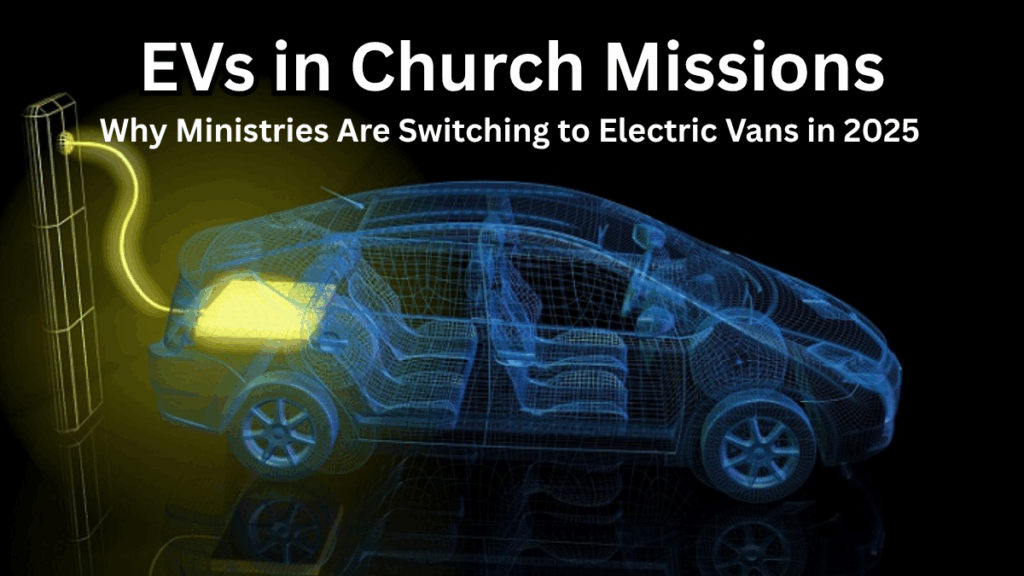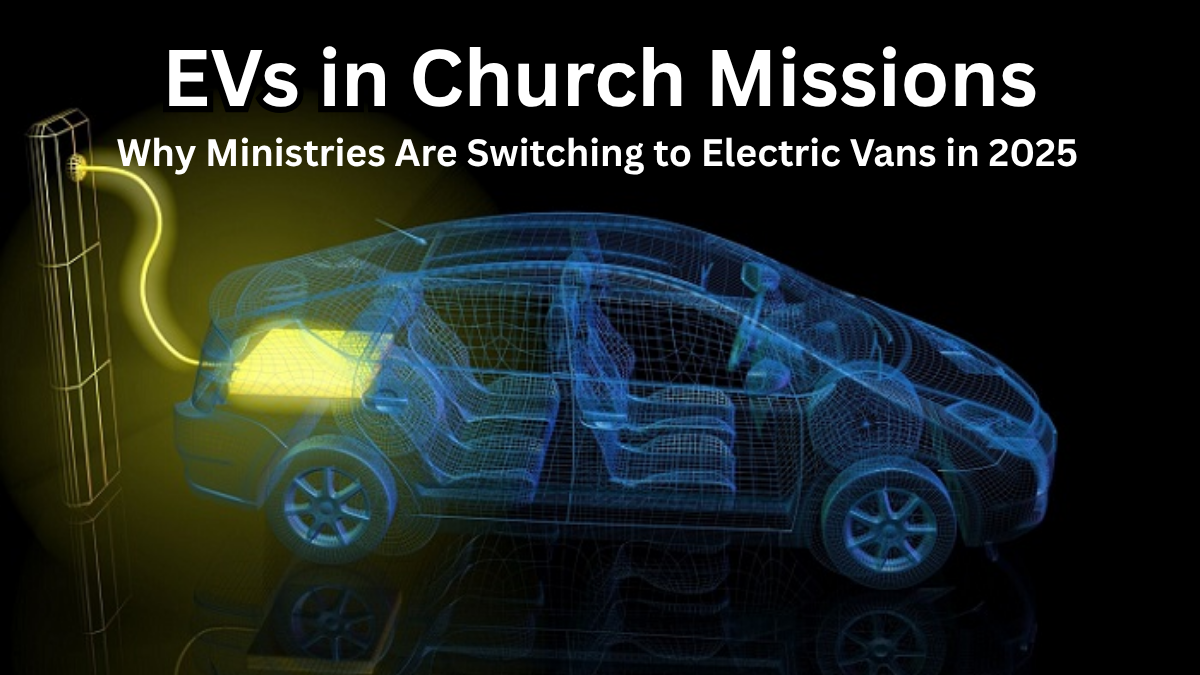As we move into 2025, a quiet but meaningful shift is happening in church and outreach communities. More ministries are now turning to electric vehicles—not just for the environmental benefits, but also for practicality and mission readiness.
Whether it’s transporting youth, delivering supplies, or offering mobile healthcare, EV use in ministry missions is proving to be a strategic and faithful investment.

Why Ministries Are Embracing Electric Vans
Churches and outreach groups are seeing electric vans as more than just tech upgrades—they’re viewing them as tools for modern ministry.
Key Reasons for the Switch
-
Lower operational costs compared to traditional fuel-based vans
-
Faith-driven environmental stewardship in line with creation care values
-
Minimal maintenance needs thanks to simplified EV mechanics
-
Positive community perception and role modeling sustainable choices
Benefits of Electric Van Use for Outreach
| Benefit | Description |
|---|---|
| Cost Efficiency | Saves money on fuel and maintenance over time |
| Quiet Operation | Ideal for nighttime outreach and residential community visits |
| Custom Fit Options | Vans can be adapted for medical use, food delivery, or mobile worship |
| Government Support | Incentives and subsidies available for nonprofits and faith-based groups |
| Emission-Free Travel | Reduces environmental impact, especially in high-traffic or rural areas |
Real Impact: EV Use in Ministry Missions
Ministries nationwide are witnessing powerful changes after switching to electric vehicles:
-
A church in Los Angeles saved nearly 40% on travel costs within the first year of EV adoption.
-
A health ministry in Texas is now using solar-powered electric vans to reach underserved rural areas.
-
In Atlanta, youth leaders use electric vans to transport volunteers, reducing their monthly fuel expenses significantly.
These examples highlight how electric van use for outreach is enhancing both reach and responsibility.
Overcoming Common Challenges
While the shift to EVs has clear benefits, ministries have also had to navigate some early hurdles.
| Challenge | Solution |
|---|---|
| Charging Station Accessibility | Partner with local businesses or install on-site church charging units |
| Upfront Vehicle Costs | Apply for nonprofit grants and tax incentives |
| Range Concerns for Long Routes | Opt for long-range models and plan routes with charge stops in mind |
| Training for Volunteers and Staff | Organize workshops and EV orientation sessions |
A New Direction for Outreach
The move toward electric vans represents a deeper commitment by ministries—not only to their mission fields but also to the stewardship of Earth and resources. In 2025 and beyond, EV use in ministry missions will likely continue growing as churches align their actions with their values.
By switching to cleaner, quieter, and smarter transportation, faith-based groups are showing the world what purposeful innovation truly looks like.
FAQs
Q1. Why are ministries switching to electric vans in 2025?
Electric vans offer long-term savings, reduced emissions, and align with values of stewardship and sustainability, making them ideal for church missions.
Q2. How does electric van use for outreach compare to traditional vans?
Electric vans are quieter, cheaper to maintain, and better for the environment—perfect for outreach programs in both urban and rural areas.
Q3. What if a ministry operates in a rural area with limited charging options?
Many new electric vans offer extended ranges, and ministries can plan routes strategically or partner with local facilities for charging support.
Q4. Are there funding options available to help churches afford EVs?
Yes, there are nonprofit grants, federal and state-level incentives, and donation campaigns specifically tailored to help ministries with EV adoption.
Click here to learn more
